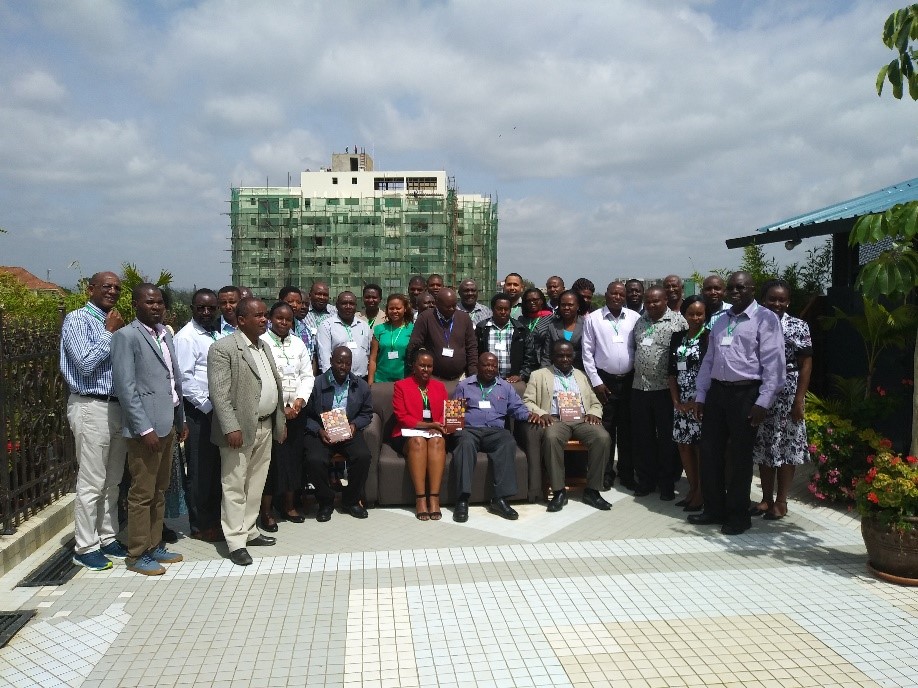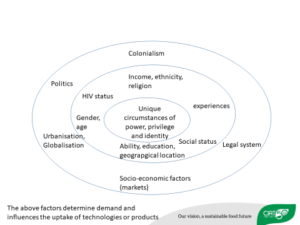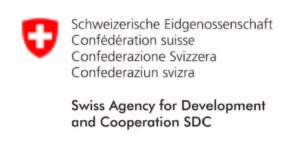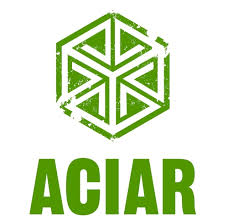By Eileen Nchanji
Breeders across Sub-Saharan Africa came together to attend a training workshop in Nairobi, Kenya between 11th and 13th December 2017 to discuss breeding as a business. Presentations were done by multiple actors from the private sector (processors, aggregators, seed enterprises), National agricultural institutes (from Kenya, Ethiopia, Congo DRC, Rwanda, Tanzania, Malawi, Zimbabwe, Ghana, Burundi and Uganda) and International center for Tropical Agriculture (CIAT) lead scientists. The presentations covered demand for dry beans and bean products, challenges of breeding beans across countries and regions, harmonisation laws and a way forward in subsequent years.
The gender advisor for CIAT focused on the intersectional angle of breeding beans as a business, where breeding beans takes into consideration the needs and interest of everyone along the bean value chain. This is because bean is now one of the most tradeable commodities in East Africa (with countries like Ethiopia exporting 100% to Europe and Asia) and can contribute greatly to income, nutrition and health.
African agriculture is transforming and central to this transformation is identifying the market demands and developing agricultural products that meet this demand. Breeders have, over the past decade, developed agricultural products through participatory varietal selection with characteristics which meet the demand of farmers. This demand for new plant varieties was mainly to meet household consumption needs with excesses sold to meet other basic needs.
The call for a transformation in agriculture is now being embraced by breeders, who, in discussion with public and private sector investors, are redefining breeding as a business. This is because plant breeding is a long time investment which can succeed if it becomes a business. This change in attitude and practice of breeders aims to increase productivity and profitability of crop agriculture in Africa to meet the ever-increasing food demand across the population due to changes in diets and lifestyles. Breeders have noted that market demand can originate along an entire value chain from farmers to processors to consumers. The breeders also observe that new plant varieties need to be developed and adapted to meet these varied market needs. The general uptake of new varieties from breeding programs in Africa is almost twice as low compared to Asia and South America, a shortcoming which observably needs to be worked on.
Demand-led breeding from an intersectional lens
“Demand” in demand-led breeding is a multifaceted concept that cuts across markets, nutrition, health, policies and people. With the increase in population and urbanisation, socio-economic demographics are changing, influencing the demand for dry beans and bean products along the urban-rural continuum. Intersectionality is conceptualised as the differences among women and men) farmers, processors, consumers and researcher) along the urban-rural continuum, rather than simply between them, that enables or excludes one from participating in an activity. These differences could be as a result of the circumstances one finds him/herself in, due to the socio-economic and political relationships, identity, geographical location and the environment (Figure 1).
Figure 1: Intersectionality displayed in a wheel diagram
Intersectional lines listed in Figure 1 above are not exhaustive. They constitute entry points in understanding the needs of the different clients targeted by breeders in meeting market demands; like who they are, their needs, preferences and what limits their adoption of a technology or a product and what pushes them to consume another.
Way forward
Transformative African agriculture through demand-led breeding requires the adoption of an integrated approach taking into consideration the heterogeneity of its clients along the value chain. Also creating an enabling environment for actors along the value chains to participate and contribute to the increasing availability and adoption of high performing plant varieties that meet their needs and market demands.
Acknowledgements








